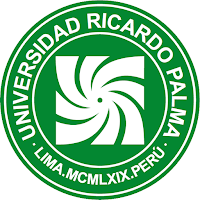La influencia de la ansiedad: la presencia vitalicia de Rubén Darío en la obra de César Vallejo
La influencia de la ansiedad: la presencia vitalicia de Rubén Darío en la obra de César Vallejo La influencia de la ansiedad: la presencia vitalicia de Rubén Darío en la obra de César Vallejo
Article Sidebar
Main Article Content
Adam Feinstein
Abstract
Harold Bloom established the concept of the «anxiety of influence», that is, the phenomenon whereby the author has the need to escape the influence of a predecessor and promotes, in itself, a coloring of the later writer’s work. In this article, we examine what we call instead the «impact of anxiety». It is argued that this phenomenon could be found in the mark that the Nicaraguan modernist, Rubén Darío, left on the work of César Vallejo, and that, contrary to what is generally assumed, this impression was, in fact, lifelong, rather than just hovering in the poet’s first collection of poems, Los heraldos negros.
Article level metrics
Downloads
Metrics
Article Details

This work is licensed under a Creative Commons Attribution 4.0 International License.
La revista utiliza una licencia Creative Commons para mostrar a los lectores y a los usuarios cómo se pueden utilizar los contenidos publicados.
Los contenidos publicados en la revista están bajo una licencia CC-BY 4.0, la cual permite:
- Compartir, copiar y redistribuir el material en cualquier medio o formato.
- Adaptar, remezclar, transformar y construir a partir del material para cualquier propósito, incluso comercialmente.
Bajo los siguientes términos:
- Atribución. Usted debe dar crédito de manera adecuada, brindar un enlace a la licencia, e indicar si se han realizado cambios. Puede hacerlo en cualquier forma razonable, pero no de forma tal que sugiera que usted o su uso tienen el apoyo de la licenciante.
La información de licencia se muestra e incrusta en las páginas de artículos y en ficheros de texto completo como sigue:
«Este obra está bajo una licencia de Creative Commons Reconocimiento 4.0 Internacional».
Abril, X. (1958). Vallejo. Ediciones Front.
Alemay, C. (2007). Versiones, revisiones y subversiones de la poesía de Rubén Darío en el siglo xx. Anales de Literatura Hispanoamericana, 36, 137-152. https://revistas.ucm.es/index.php/ALHI/article/view/ALHI0707110137A/21726
Ambroggio, L. A. (2016). Vallejo y Darío: dos poetas unidos en un poema. Espergesia, 3(1), 26-35. https://revistas.ucv.edu.pe/index.php/espergesia/article/view/1045/984
Benedetti, M. (1995). Rubén Darío, señor de los tristes. En El ejercicio del criterio (pp. 160-169). Alfaguara.
Borges, J. L. (1968). Mensaje en honor de Rubén Darío. En Mejía, E. (comp.), Estudios sobre Rubén Darío (p. 13). Fondo de Cultura Económica.
Costa, R. (1991). La diferencia de Vallejo. Revista Chilena de Literatura, (38), 7-27. https://revistapsicologia.uchile.cl/index.php/RCL/article/view/40054/41613
Coyné, A. (1958). César Vallejo y su obra poética. Editorial Letras Peruanas.
Coyné, A. (1999). Medio siglo con Vallejo. Fondo Editorial de la Pontificia Universidad Católica del Perú.
Darío, R. (1954). Poesías completas. Aguilar.
Espejo, J. (1965). César Vallejo: itinerario del hombre, 1892-1923. Editorial Juan Mejía Baca.
Hart, S. (1987). Religión, política y ciencia en la obra de César Vallejo. Támesis.
Lucas, K. (2018, 30 de julio). Rubén Darío en el camino de Hugo von Hofmannsthal. Sur y Sur. https://www.surysur.net/cesar-vallejo-y-ruben-dario-vistios-por-kintto-lucas/
Neruda, P. (1984). Confieso que he vivido. Seix Barral.
Neruda, P. (1999). Crepusculario. Editorial Andrés Bello.
Paz, O. (1965). El caracol y la sirena (Rubén Darío). En Cuadrivio (pp. 9-65). Joaquín Mortiz.
Retamar, R. F. (1995). Rubén Darío en las modernidades de nuestra América. En Para una teoría de la literatura hispanoamericana (pp. 283-307). Instituto Caro y Cuervo.
Sanín, B. (1977). El modernismo. En Escritos (pp. 421-426). Instituto Colombiano de Cultura.
Segura, A. (2013). Vallejo y Los heraldos negros: del modernismo al lenguaje vallejiano. Tonos Digital. Revista Electrónica de Estudios Filológicos, 2(25). https://digitum.um.es/digitum/bitstream/10201/39488/1/1004-3231-1-PB%20(1).pdf
Vallejo, C. (2013). Poesía completa (edited by R. González Vigil). Ediciones Copé.










